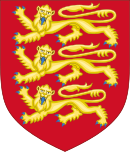
Back Nord-este d'Anglaterra AN شمال شرق إنجلترا Arabic Nordeste d'Inglaterra AST Североизточна Англия Bulgarian উত্তর-পূর্ব ইংল্যান্ড Bengali/Bangla Biz Bro-Saoz Breton North East England Catalan Severovýchodní Anglie Czech Gogledd-ddwyrain Lloegr Welsh North East England Danish
The article's lead section may need to be rewritten. The reason given is: Most of the information here is not in the body of the article and is unsupported by references. (October 2021) |
North East | |
|---|---|
| |
 North East region shown within England | |
| Coordinates: 55°00′N 1°52′W / 55.00°N 1.87°W | |
| Sovereign state | United Kingdom |
| Country | England |
| GO established | 1994 |
| RDA established | 1998 |
| GO abolished | 2011 |
| RDA abolished | 31 March 2012 |
| Subdivisions |
12 districts
|
| Government | |
| • MPs | 29 MPs (of 650) |
| Area | |
| • Total | 3,350 sq mi (8,676 km2) |
| • Land | 3,313 sq mi (8,581 km2) |
| • Rank | 8th |
| Population (2022)[2] | |
| • Total | 2,683,040 |
| • Rank | 9th |
| • Density | 810/sq mi (313/km2) |
| Ethnicity (2021) | |
| • Ethnic groups | |
| Religion (2021) | |
| • Religion | List
|
| Time zone | UTC+0 (GMT) |
| • Summer (DST) | UTC+1 (BST) |
| ITL code | TLC |
| GSS code | E12000001 |
| This article is part of a series within the Politics of the United Kingdom on the |
 |
|---|
North East England is one of nine official regions of England at the first level of ITL for statistical purposes.[a] It has three administrative levels below regional level: combined authorities, unitary authorities or metropolitan boroughs, and civil parishes. There are also multiple divisions without administrative functions; ceremonial counties, emergency services (fire-and-rescue and police), built-up areas and historic counties. The largest settlements in the region are Newcastle upon Tyne, Middlesbrough, Sunderland, Gateshead, Darlington, Hartlepool and Durham.
- ^ "Standard Area Measurements (Latest) for Administrative Areas in the United Kingdom". Open Geography Portal. Office for National Statistics. 24 April 2024. Retrieved 6 May 2024.
- ^ "Mid-Year Population Estimates, UK, June 2022". Office for National Statistics. 26 March 2024. Retrieved 3 May 2024.
- ^ a b UK Census (2021). "2021 Census Area Profile – North East Region (E12000001)". Nomis. Office for National Statistics. Retrieved 14 August 2023.
Cite error: There are <ref group=lower-alpha> tags or {{efn}} templates on this page, but the references will not show without a {{reflist|group=lower-alpha}} template or {{notelist}} template (see the help page).






